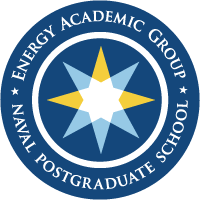DoD Joins NATO Partners to Discuss Future of Military Energy Resilience - Energy Academic Group
Principal Director of United States Air Force Operational Energy Policy, Michael Penland, describes how using data and technology to optimize aircraft operations leads to increased capability and readiness while speaking at the 2018 Innovative Energy Solutions for Military Application conference.
DoD Joins NATO Partners to Discuss Future of Military Energy Resilience
By Corrie Poland,
Air Force Operational Energy (SAF/IEN)
Article originally published November 26, 2018. Provided by the SAF/IEN office and reprinted with permission.
As part of Innovative Energy Solutions for Military Application (IESMA) 2018, a collaborative symposium led by the NATO Energy Security Centre of Excellence, international experts from the energy and defense communities came together to discuss leading developments in energy resilience and security. Over 500 participants, including many distinguished military and governmental leaders representing NATO member and partner nations, attended the biennial event held in Vilnius, Lithuania from November 14 to 16.
The event provided a forum for participating nations to discuss the future of innovative energy capabilities, and exchange best practices on how to increase combat capability through efficient operations and cutting-edge technology. Senior defense and industry representatives spoke on a number of topics, including secure energy logistics, infrastructure and storage, energy management, next generation power systems, optimized mission planning, and alternative fuels, among others.
Leaders from the Office of the Secretary of Defense, Air Force and Navy represented United States interests aligned with the National Defense Strategy, and collaborated with participating nations on how to move forward to integrate smart energy solutions across the Alliance.
“We are in the midst of revolutionary changes that make energy even more critical,” said Lucian Niemeyer, a Strategic Advisor on energy programs for the Under Secretary of Defense for Acquisition and Sustainment. “As our forces require more power, and energy is increasingly a target, energy resilience and security will have an increasingly direct relationship on warfighter capabilities.”
Underlying each discussion emerged several common themes. Speakers emphasized the increased lethality brought by more efficient military operations. By reducing energy demand, forces can ensure a more reliable supply—especially in remote locations, increase range, and reduce operational risk.
Principal Director of United States Air Force Operational Energy Policy, Michael Penland, described how using data and technology to optimize aircraft operations leads to increased capability and readiness. “Optimizing aviation fuel use leads to a number of second and third order effects like increased range, fewer maintenance issues, and reduced costs—funds that could be used for things like more training or new technology,” he explained.
“We need to organize for innovation,” said Oliver Fritz, Principal Director in the Office of the Deputy Assistant Secretary of Defense for Energy. “It's essential that we not only improve our use of energy, but focus on being resilient to energy disruptions,” he continued.
Another important topic highlighted the strategic importance of collaborating with industry and allied partners to provide secure energy solutions for the warfighter.
In his opening statement, Col. Romualdas Petkevi?ius, Director of the NATO Energy Security Centre of Excellence, encouraged participants to collaborate with industry vendors to adopt modern technologies and address energy challenges. “Pay attention to what companies can offer as they bring solutions that already work and have been tested in civilian environments, as well as in industry practice,” he said.
Throughout the event, attendees were prompted to visit the exhibition hall to network with commercial companies providing energy solutions and learn of industry best practices that could be applied to the military. Attendees also participated in a number of networking events to share information and continue to build international and cross-organizational relationships.
The mix of distinguished guests and subject matter experts present highlighted the importance of the topic and the variety of ways that militaries and organizations are trying to address today’s energy challenges. This year boasted the highest attendance for any IESMA symposium yet, and it is only expected to grow in depth and variety of topics in the coming years. The next IESMA is scheduled for 2020 in Vilnius.
LEARN MORE
For more information and news on Air Force Operational Energy visit: safie.hq.af.mil/OpEnergy
Quarterly Newsletter
Surge is published quarterly by the Energy Academic Group and covers a divese range of energy-related topics. View archive

